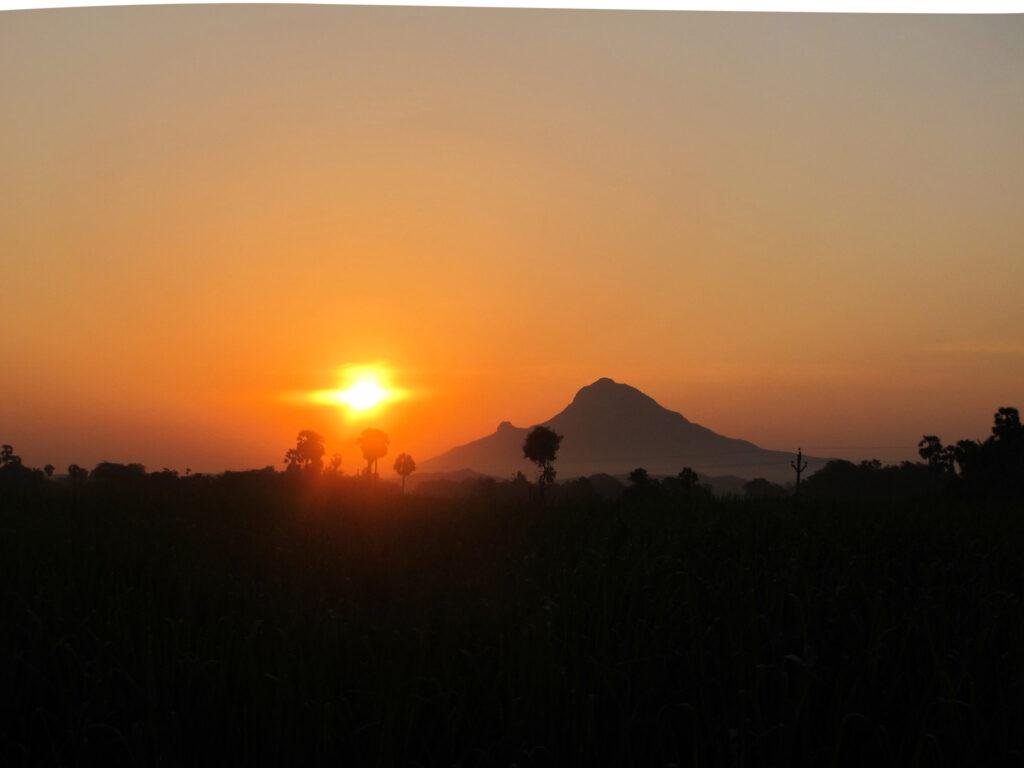
The Legend of Arunachala Mountain
According to the legend associated with the temple, a dispute arose between Brahma, the creator, and Vishnu, the preserver, over which of the two was the superior. To settle the dispute, Lord Shiva is said to have manifested as a pillar of light and then in the form of Arunachala. However, Brahma and Vishnu forgot their supreme sacred duties and competed with each other. To solve this problem, Lord Shiva rose to test heaven and earth and said, “He who sees his head and feet is the greatest among you. Brahma and Vishnu failed miserably, no matter how hard they tried. Thereupon, the theras, unable to bear the heat, pleaded with Lord Shiva for peace. In response to their request, Lord Shiva bowed down before a mountain, on the top of which a small torch appeared, and all worshipped him. The place is also known as Thiruvannamalai, also known as Arunachalam, the place of fire. The Karthika lamp is placed on this hill every year during the month of Karthika. Tens of thousands of people flock to Thiruvannamalai on this day. Creation is by Brahma, preservation by Vishnu, destruction by Rudra, grace and illusion by Shiva. In the Maheswara Khanda of the Skanda Purana, sage Veda Vyasa describes in great detail the miracle of Arunachala.
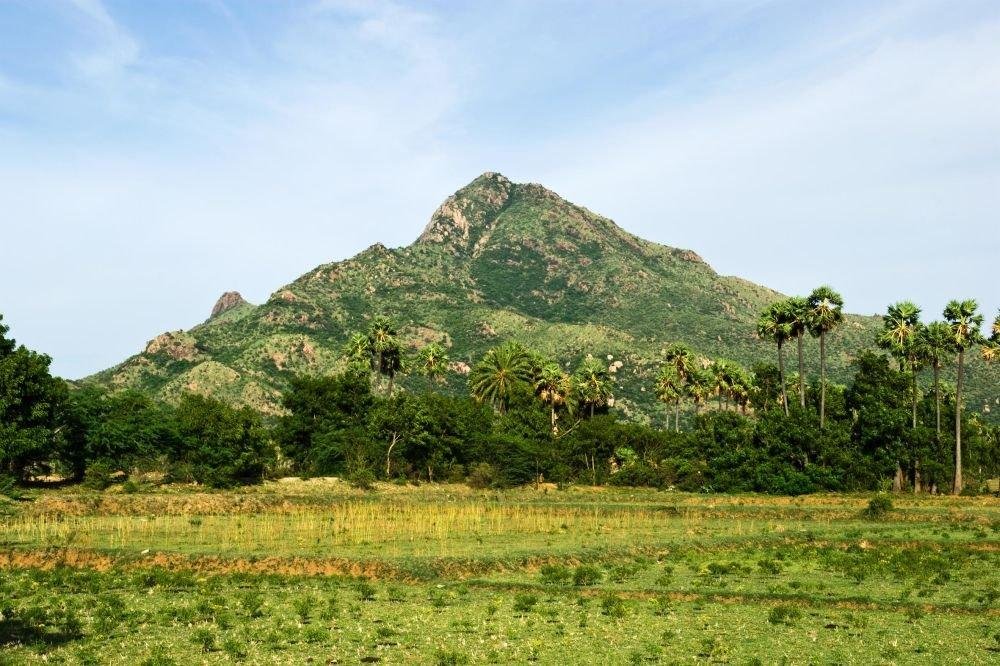
Arunachala Mountain in Tiruvannamalai, Tamil Nadu, South India
Over the centuries, many saints and sages have been drawn to the Arunachala. The Saivite saints of the 5th to 10th centuries Manickavachagar, Appar, Sambandar and Sundarar are four examples. In the 5th century, Guhai Namasivaya, Guru Namasivaya and Virupaksha Deva came from Karnataka and settled at Arunachala. Saint Namasivaya lived in one of the caves of Arunachala, which is still known by his name. Virupaksha Deva lived in an OM-shaped cave further up the mountain, and this cave too still bears his name. This cave on the south-eastern slope of Arunachala was the cave where Sri Ramana Maharshi lived from 1899 to 1916.
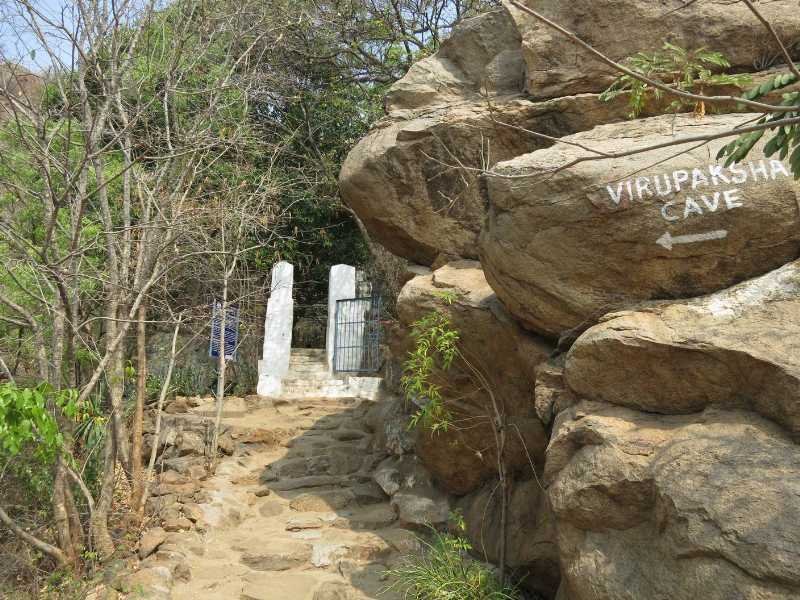
Arunachala Mountain, Tiruvannamalai
Giri Pradakshina
The circumambulation of Arunachala is known as Giri Pradakshina in Sanskrit and Giri Valam in Tamil. The pradakshina around Arunachala is considered wholesome in all respects and is usually performed barefoot and with the mountain on the right side. Sri Ramana Maharshi has expertly presented the meaning of the word pradakshina and the way it must be done by a devotee: “The letter “Pra” stands for the removal of all kinds of sins; “da” stands for the fulfilment of desires; “kshi” stands for freedom from future births; “na” stands for liberation through jnana. If one takes one step on the path of pradakshina, there is happiness in this world, two steps; there is happiness in heaven, three steps; there is the bliss of satyaloka that can be attained. One should walk around either in mouna (silence) or dhyana (meditation) or japa (repetition of the Lord’s name) or sankeertana (bhajan) thinking of God all the time. One should walk slowly like a woman in her ninth month of pregnancy.”
Throughout the year, pilgrims do an exercise called giri valam (circumambulation of the Annamalaiyar temple and Annamalai hill with a circumference of 14 km), which is considered a simple and effective form of yoga. The circumambulation is started barefoot from the temple and is regarded as a sacred walk. The Central Government of India, through the Supreme Court, has asked the Tamil Nadu government to direct the path of the Girivalam under the proposed Tamil Nadu Heritage Conservation Act.


Giri Pradakshina – Walk around Arunachala Mountain during Full Moon Night
Lingams around Arunachala Mountain
Within the 14 km circumference of the hill, there are eight small lingam shrines, each associated with the 12 moon signs. These are called Ashta Lingam (i.e. 8 Lingams) and are considered one of the rituals of worship during the Girivalam (circumambulation of the hill).
It is believed that each lingam is associated with one or more of the navagraha (9 planets) and that propitiating that lingam can bring you the blessings of the respective graha(s) (planet).
Indra Lingam (East)
Indra Lingam faces east and is associated with the celestial Lord Indra. The Hindu mythology states that Indra is the king of heaven and Indrani is his wife. His vehicle is a white elephant with four tusks called Iravatham. Lord Indra is depicted sitting on his vehicle with his weapon Vajra (thunderbolt) in his hand, with which he removes ignorance and bestows spiritual wisdom on his ardent devotees.
Indra Lingam is associated with the Navagrahas – Surya (Sun) and Shukra (Venus). Worship of Indra Lingam can bless you with prosperity and longevity.
Agni Lingam (Southeast)
Agni Lingam is placed towards the southeast and is associated with Lord Chandra (Moon). Lord Agni is depicted with seven hands and seven tongues and has the goat Saga as his vehicle. He is the fire of knowledge and the source of light for the entire cosmos. He is usually invoked during homas (fire labours) where his vehicle serves as the sacrificial animal.
If you offer your prayers to Agni Lingam, he can free you from diseases, help you maintain good health and give you strength to overcome life’s hurdles and problems.
Yama Lingam (South)
Lord Yama is the God of Death and Yama Lingam is placed in the southern direction. This lingam is connected to the planet Mangala (Mars). Lord Yama is depicted with a black buffalo called Mahishan as his vehicle and two monstrous dogs at his sides. He is believed to carry a huge lasso with which he pulls a person to heaven or hell at the time of death, depending on their karma.
Worship of Yama Linga can eliminate financial shortages and is also conducive to longevity.
Niruthi Lingam (Southwest)
Niruthi Lingam has the cardinal direction of Southwest and is associated with the nodal planet Rahu. Niruthi is the king of the asuras (demons) and has a dog as his vehicle. He is believed to rule over the southern kingdom along with Lord Yama, the god of death. According to legend, King Nala took a bath in the Niruthi Lingam Theertham (sacred pool) to rid himself of his sins.
It is believed that this lingam can protect people from the evil effects of black magic and other negativities. Worship of the Niruthi Lingam can bring one good health, wealth, fame and progeny. It is also believed that this lingam helps devotees to detach from worldly desires.
Varuna Lingam (West)
Varuna Lingam is west oriented and has Lord Shani (Saturn) as the dominant planet. Varuna’s vehicle is Makara – an amphibian (living both on land and in water) with the head and forelegs of an antelope and the body and tail of a fish.
According to mythology, Varuna is the ruler of esteem and joy and rules the whole world. He is considered the god of rain and all waters in the universe. Legend has it that the eye of Varuna is Surya, and when Surya falls in the constellation of Makara, this special event is celebrated every year in mid-January as Makara Sankaranti. This festival is celebrated in Tamil Nadu as Pongal.
A sacred tank called Varuna Theertham is located here. Worshipping the Varun Lingam can protect you from diseases, especially water-borne diseases. It is also believed to wash away accumulated sins.
Vayu Lingam (Northwest)
Vayu Lingam faces northwest and has the nodal planet Ketu connected to it. According to legend, Vayu is the god of wind and the source of life-giving breath for all beings in the universe. The deer is his vehicle and he is often thought of together with Lord Indra.
It is widely reported that anyone entering this temple at any time of the year is greeted with a gust of wind. Worship of the Vayu Lingam can relieve you of heart, stomach, lung and general ailments.
Kubera Lingam (North)
Kubera Lingam is aligned to the north and has Lord Brihaspati (Guru or Jupiter) as its associated planet. According to mythology, Kubera is the chief of the Yakshas and the banker of heaven who protects the wealth of the celestial beings. He is described as having three legs and eight teeth and his vehicle is a female goat. He dwells in the Himalayas with his consort Yakshi.
It is believed that Kubera came here to worship Lord Arunachaleswara to retain his wealth and abundance. Hence, a lingam is installed at this place facing north from the mountain. Kubera is the god of material prosperity and wealth. He is seen as the one who distributes wealth among his devotees and does not create wealth.
Esanya Lingam (Northeast)
Esanya Lingam is placed in the north-east direction and is associated with Budha or the planet Mercury. Mythologically speaking, Esanya is considered as one of the seven Rudras of Lord Shiva. He is depicted with matted locks, fiery eyes, a body covered with ashes and a crescent moon and Ganga in his locks of hair. He sits on a tiger skin and is surrounded by spirits. His body is covered with coiled snakes and in his hands he holds a drum and a trident.
Worship of the Esanya Lingam can give you inner peace and contentment.
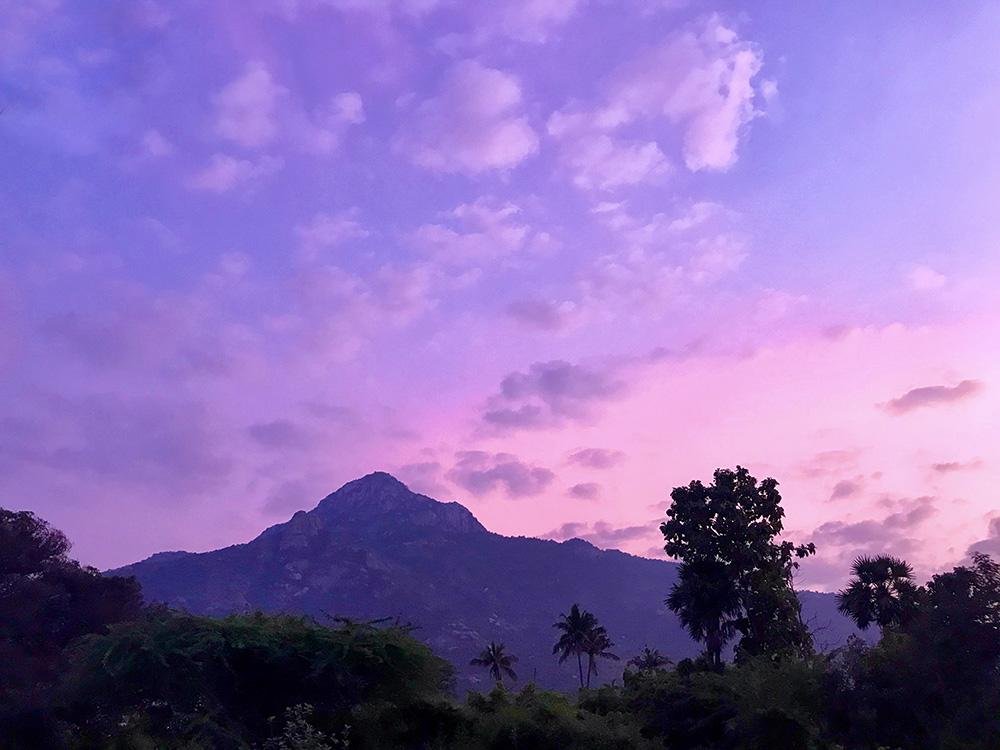
Arunachala during Full Moon Night in Jan 2020
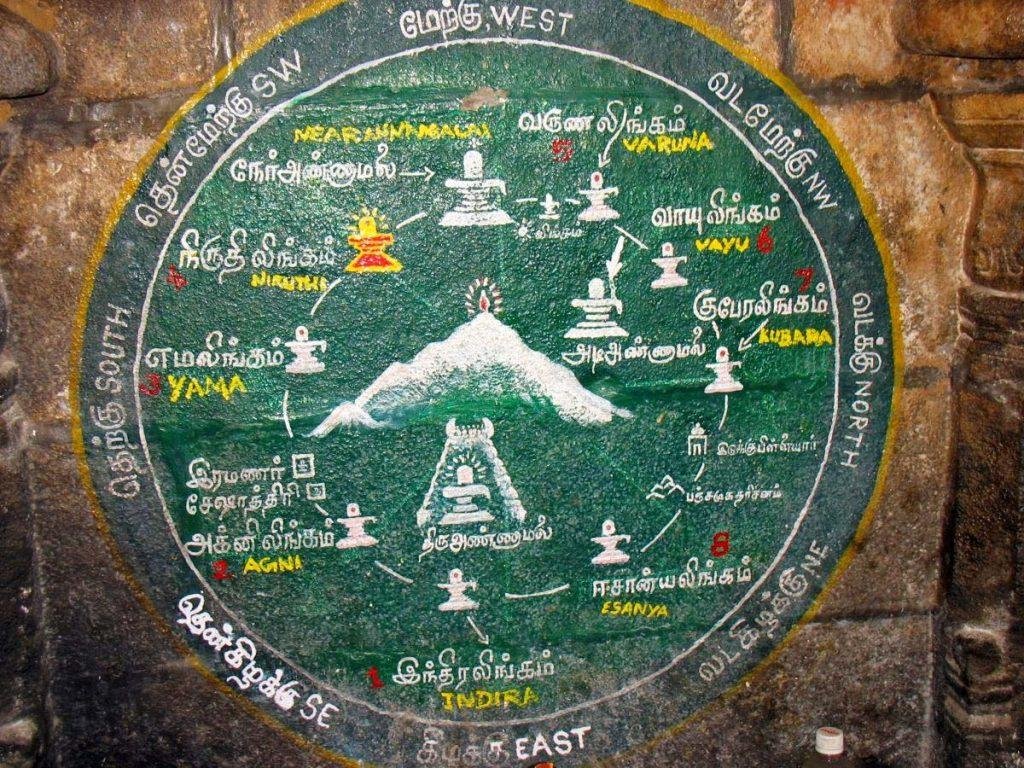
Map: Lingams around Arunachala
The arrangement of the Asta Lingams around the octagonal perimeter of Arunachala reflects the geometry of a Cosmogram. The octagonal shape is surrounded by a total of eight Lingam Temples (Asta Lingams). Each of these Temples are located at the four cardinal and four inter-cardinal points. This was also believed by the ancients who originally constructed the Lingams at their eight cardinal and inter-cardinal points to represent, characterise and vitalise certain aspects and qualities of life in relation to specific fields of energy and influence.








